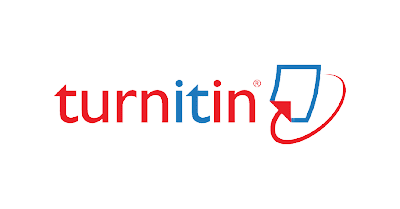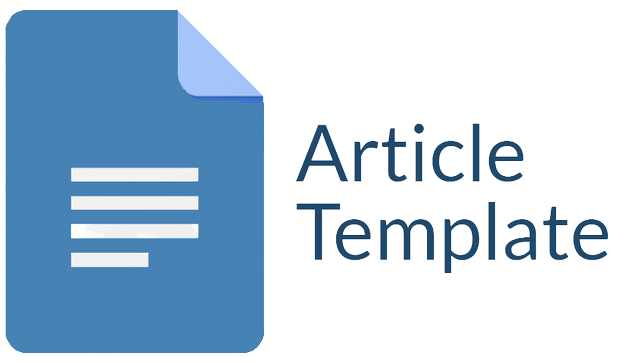ALTERNATIF PENGENDALIAN LIMPASAN PERMUKAAN DI PERKOTAAN DENGAN MENGGUNAKAN METODE ANALYTICAL HIERARCHY PROCESS (AHP)
Abstract
Control of surface runoff is a major challenge in sustainable urban stormwater management. High rainfall can cause various problems such as floods and landslides. Related to the problem of surface runoff includes a number of problems that require attention and good solutions to maintain environmental sustainability and prevent negative impacts from surface runoff. Surface runoff control activities generally tend to be social, technically costly, and relatively long. Collaboration with experts, government, and local stakeholders can also reinforce the concept of successful surface runoff control. The application of the AHP (Analytical Hierarchy Process) method is needed as a systematic approach to evaluate and select effective alternative surface runoff control systems, in this study four alternatives were taken based on three criteria. These alternatives involve solutions such as the application of biopores of infiltration wells, rainwater harvesting, retention ponds and green open spaces then these alternatives are evaluated based on relevant criteria, in this study the relevant criteria are taken namely technically, environmentally and cost. The results of this analysis using the AHP method provide relative priority values for each alternative, allowing for the selection of optimal solutions to surface runoff problems. Based on this assessment, it shows that alternative green open space is an optimal solution for surface runoff control systems in urban areas.
Downloads
References
Citra, F. W., Nurmintan, & Dihamri. (2022). Karakteristik Intensitas Curah Hujan Yang Terjadi Di Kota Bengkulu Pada Tahun 2016 – 2021. Jurnal Georafflesia, 7(2).
Desmonda, D., Tursina, T., & Irwansyah, M. A. (2018). Prediksi Besaran Curah Hujan Menggunakan Metode Fuzzy Time Series. Jurnal Sistem Dan Teknologi Informasi (JUSTIN), 6(4), 141. https://doi.org/10.26418/justin.v6i4.27036
Dewanti, Y. P., Muliadi, & Adriat, R. (2018). Pengaruh El Niño Southern Oscillation (ENSO) Terhadap Curah Hujan di Kalimantan Barat. Prisma Fisika, 6(3).
Freecenta, H. F., Yulia Puspaningrum, E., & Maulan, H. (2022). Prediksi Curah Hujan Di Kab. Malang Menggunakan LSTM (Long Short Term Memory). Jurnal Informatika Dan Sistem Informasi, 3(1). https://doi.org/10.33005/jifosi.v3i1.448
Han, Y., Wang, Z., Lu, X., & Hu, B. (2020). Application of AHP to road selection. ISPRS International Journal of Geo-Information, 9(2). https://doi.org/10.3390/ijgi9020086
Hastuty, S. (2017). Identifikasi faktor pendorong alih fungsi lahan pertanian. Jurnal Prosiding Seminar Nasional, 03(01).
Isa, M., Sumarauw, J. S. F., & Hendratta, L. A. (2020). Analisis Debit Banjir Dan Tinggi Muka Air Sungai Marisa Kecamatan Limboto Barat Kabupaten Gorontalo. Jurnal Sipil Statik, 8(4), 591–600.
Ishak, I. (2018). Dampak Curah Hujan Terhadap Produktivitas Tanaman Padi Sawah Pada Masyarakat Petani Di Desa Lambo-Lemo Kecamatan Samaturu Kabupaten Kolaka. Jurnal Penelitian Pendidikan Geografi, 3(4). https://doi.org/10.36709/jppg.v3i4.4834
Kamiana, I. M. (2018a). Pengendalian Debit Limpasan Permukaan Berbasis Pemanenan Air. PROTEKSI (Proyeksi Teknik Sipil), 4(2).
Kamiana, I. M. (2018b). Pengendalian Debit Limpasan Permukaan Berbasis Pemanenan Air Hujan Skala Individu Pada Jaringan Saluran Drainase Tersier. PROTEKSI (Proyeksi Teknik Sipil), 4.
Kebangkitan, P. M., Kreatif, E., Petani, K., Faktor-Faktor, D., Memengaruhi, Y., Fungsi, A., Kakao, L., Jhalani, N. F., Managanta, A. A., & Ridwan, D. (2022). Karakteristik Petani dan Faktor-Faktor yang Memengaruhi Alih Fungsi Lahan Kakao ke Nilam. Prosiding Seminar Nasional Fakultas Pertanian UNS, 6(1).
Kustamar. (2017). Pengendalian Limpasan Permukaan. Mitra Gajayana, Bagian I.
Kustamar, Hargono, E., & Subakti, B. (2018). Strategi Pengendalian Banjir di Kawasan Permukiman Padat. Buletin Utama Teknik, 14(1).
Latief, R., Barkey, R. A., & Suhaeb, M. I. (2021). Perubahan Penggunaan Lahan Terhadap Banjir di Kawasan Daerah Aliran Sungai Maros. Urban and Regional Studies Journal, 3(2). https://doi.org/10.35965/ursj.v3i2.669
Leal, J. E. (2020). AHP-express: A simplified version of the analytical hierarchy process method. MethodsX, 7. https://doi.org/10.1016/j.mex.2019.11.021
Maslia, & Puspitasari, D. juli. (2023). Dampak Perubahan Curah Hujan Terhadap Pendapatan Petani Padi Di Desa Kombo Kecamatan Dampal Selatan Kabupaten Tolitoli. Jurnal Gawalise, 1(2).
Mohammed, A. M., Morsy, E. I., & Omara, F. A. (2018). Trust model for cloud service consumers. 122–129. https://doi.org/10.1109/itce.2018.8316610
Nasib, S. K., Nurwan, N., Yanuari, E. D. D., & Macmud, T. (2022). Karakteristik Rantai Markov Pada Data Curah Hujan Bulanan Stasiun Djalaluddin. Jurnal Matematika Dan Pendidikan Matematika, Vol. 7 No.(Vol. 7 No. 2 (2022): Vol. 7 No. 2 (2022): September 2022-Februari 2023).
Ningsih, D. H. U. (2012). Metode Thiessen Polygon untuk Ramalan Sebaran Curah Hujan Periode Tertentu pada Wilayah yang Tidak Memiliki Data Curah Hujan. Jurnal Teknologi Informasi DINAMIK, Volume 17(No 2).
Nufutomo, T. K. (2022). Perubahan Iklim Sebagai Ancaman Ketahanan Kualitas Air Pada Daerah Aliran Sungai: Literatur Review. Jurnal Reka Lingkungan, 10(3).
Permadi, M. G., Tjahjono, B., & Baskoro, D. P. T. (2018). Identifikasi Daerah Risiko Bencana Longsor di Kota Bogor. Jurnal Ilmu Tanah Dan Lingkungan, 20(2). https://doi.org/10.29244/jitl.20.2.86-94
Rahmawan, H., Muhammad, D. M., & Farianto. (2022). Pengembangan sistem pengukur curah hujan di sungai Jakarta berbasis IoT. Jurnal Ilmu Komputer Dan Agri-Informatika, 9(1). https://doi.org/10.29244/jika.9.1.23-36
Sari, R. W. S. W. S., & Yuliani, E. (2022). Identifikasi Dampak Alih Fungsi Lahan Pertanian Ke Non Pertanian Untuk Perumahan. Jurnal Kajian Ruang, 1(2). https://doi.org/10.30659/jkr.v1i2.20032
Sideng, U., Zhiddiq, S., & Ernah, E. (2022). Analisis Karakteristik Curah Hujan di Wilayah Kabupaten Sinjai. LaGeografia, 20(2). https://doi.org/10.35580/lageografia.v20i2.22730
Taufiqurrahman, T. (2020). Pengaruh Ketelitian Proses Interpolasi Data Curah Hujan analisis Rawan Bencana Banjir.
Yuda, I. W. A. (2020). Perbandingan Dampak El Nino Kuat 2015/16 Dan 1997/98 Terhadap Curah Hujan Di Provinsi Bali - Indonesia. Megasains, 11(2). https://doi.org/10.46824/megasains.v11i2.13
Copyright (c) 2024 Tiny Mananoma, Frederiko Marchiano Imanuel Moningka

This work is licensed under a Creative Commons Attribution-ShareAlike 4.0 International License.
Jurnal allows anyone to compose, correct, and do derivative works, even for commercial purposes, as long as they credit for the original work. This license is the freest. It is recommended for maximum distribution and use of licensed material.
The submitted paper is assumed not to contain any proprietary materials that are not protected by patent rights or patent applications; The responsibility for technical content and protection of proprietary materials rests with the authors and their organizations and not the responsibility of journal or its editorial staff. The primary (first/appropriate) author is responsible for ensuring that the article has been viewed and approved by all other authors. The author's responsibility is to obtain all necessary copyright waivers to use any copyrighted material in the manuscript before submission.
Jurnal Pendidikan, Sains dan Teknologi allows the author(s) to hold the copyright without restrictions and allow the author(s) to retain publishing rights without restrictions. Jurnal Pendidikan, Sains dan Teknologi CC-BY-SA or an equivalent license as the optimal license for the publication, distribution, use, and reuse of scholarly work. Jurnal Pendidikan, Sains dan Teknologi allows the author(s) to hold the copyright without restrictions and allow the author(s) to retain publishing rights without restrictions. Jurnal Pendidikan, Sains dan Teknologi CC-BY-SA or an equivalent license as the optimal license for the publication, distribution, use, and reuse of scholarly work.
In developing strategy and setting priorities Jurnal Pendidikan, Sains dan Teknologi recognize that free access is better than priced access, libre access is better than free access, and libre under CC-BY-SA or the equivalent is better than libre under more restrictive open licenses. We should achieve what we can when we can. We should not delay achieving free in order to achieve libre, and we should not stop with free when we can achieve libre.
Jurnal Pendidikan, Sains dan Teknologi is licensed under a Creative Commons Attribution-ShareAlike 4.0 International License.
You are free to:
- Share a copy and redistribute the material in any medium or format
- Adapt a remix, transform, and build upon the material for any purpose, even commercially.
- The licensor cannot revoke these freedoms as long as you follow the license terms.






